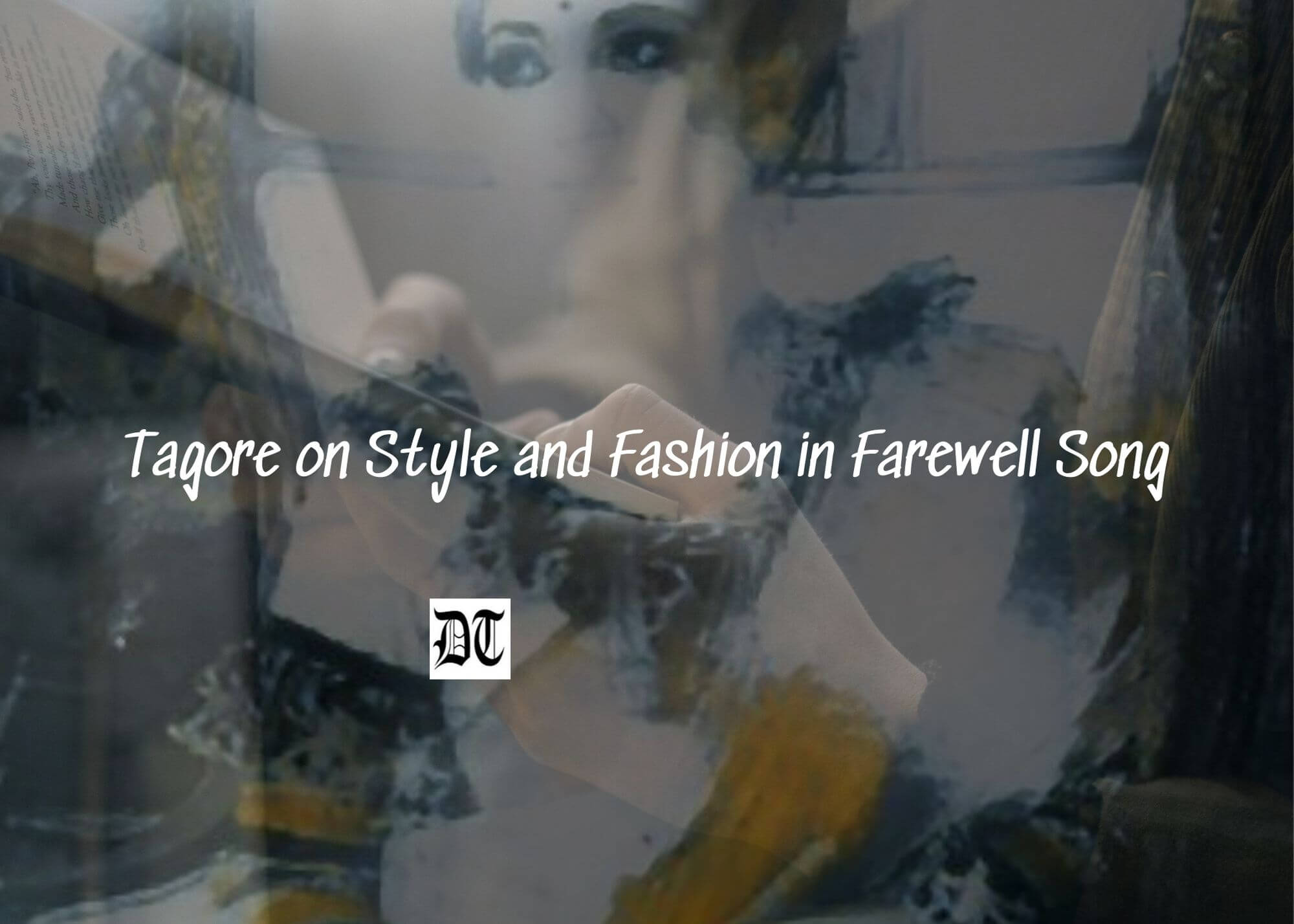Reading Time: 3 minutes
Tabassum tells us about the modernity of Rabindranath Tagore. In his novel, Shesher Kobita (Farewell Song), the Bard makes a clear distinction between style and fashion. A Special Feature, on his 160th birth anniversary, exclusively for Different Truths.

“Amit likens fashion to a mask, and style to the beauty of countenance.” ~ Rabindranath Tagore, Farewell Song
We often confuse between style and fashion. What is style? Style defines one. Fashion is a trend of time and people follow it. Fashion is short lived and changes. Style is timeless and it represents who you are. One’s personality. For example, one wants to stand out among the crowd. One wants to be unique. His or her attire should reflect his/her personality. The grace and elegance within that person. You like silk, satin, chiffon, lace sarees. Suppose terracotta is in the fashion trends. Will you consider yourself wearing terracotta jewelry with your silk, chiffon, georgette or lace saree? There is an unwritten tradition of wearing cotton sarees in certain celebrations. But you need not to wear it. You can always wear your silk with the colour theme.
Tagore himself created a style himself. His dress-up reflected his spirituality, a demi-God like aura. How many had the courage to follow Tagore’s clothing style. He believed in individual style, not fashion.
In his famous and timeless piece of classic, Shesher Kobita (Farewell Song) the protagonist Amit Ray likens fashion to a mask, and style to beauty of countenance. Style, he feels, belongs to the literary elite, who live by their own wishes. And fashion is for the ordinary lot, who make it their business to please other people…. You may view a professional dancing girl beneath the awning of a public marquee; but for the first glimpse of the bride’s face during the shubhodrishti ritual, a veil of Banarasi fabric is required. The marquee belongs to fashion, the Banarasi veil – which reveals the special one’s countenance shaded by a special hue – to style.
Was he making a distinction between the classes? I do not think so. Ketaki was a follower of the English dressing style. Tagore wasn’t much skeptic about it. The tone of the narrator is that she was following without understanding whether it suited her not.
Labanya had been represented with typical desi style. We could sense the bias in the tone of the narrator. Yet Labanya was not following any trend. She was dressed according to her personality. Her dress up embodied her dignity and grace. Jogmaya, the embodiment of tradition, was dressed in the most elegant yet simple way.
Tagore preached here to create your style, you need to be creative, thoughtful, sensible and to some extent poetic. It is not wise to run after fashion when it does not suit you.
It is not wise to run after a fashion when it does not suit you. To create your style, you need to be creative, thoughtful, sensible and to some extent poetic. Style is elegance and grace.
It is your choice whether to embrace style or fashion. With little experiment you can stand out among many. All you need is your own creativity. It is not wise to follow or copy some one’s fashion or style. Even in fashion trends try to be unique. Your uniqueness will represent your inner beauty and personality with style. Your fashion trend sense will make you eye candy. Be bold and the beautiful. But above all do not forget the saying of Tagore. Do not be cheap by running after trends without proper understanding. It is wise to be noticeable among many rather than becoming the object of commodity to please others.
Visuals by Different Truths


















really enjoyed reading about Tagore’s views on style and fashion
It is my honour and pleasure.
Stay safe, stay home.
Best regards,
Sincerely yours